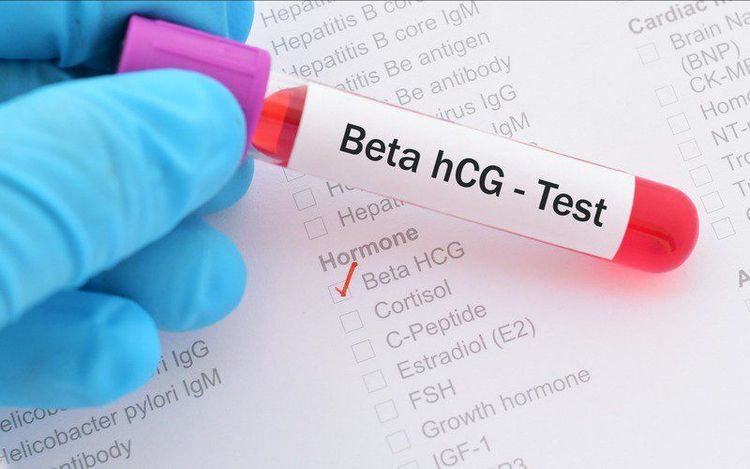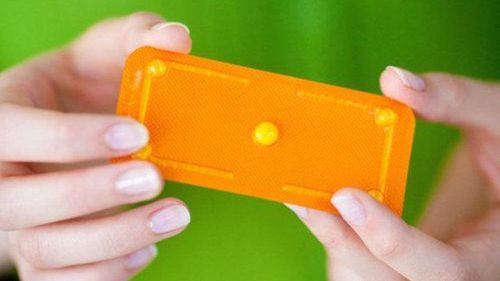This article will discuss the best time to take a pregnancy test and what the results might indicate about your pregnancy status. Equipping yourself with a solid foundation of knowledge will help you handle and recognize common situations when you suspect you might be pregnant, so you won't be caught off guard or confused.
1. Mechanism of Action of Pregnancy Tests
Most pregnancy tests available on the market today are qualitative tests that measure the concentration of β-hCG in your urine. This hormone is secreted by the placenta, and in normal women, its concentration is very low and cannot be detected by the test. If the test is positive, it is highly likely that you are pregnant.
Using a pregnancy test is extremely simple and convenient. Pregnancy tests are widely available on the market, making it easy for you to access this method. However, to determine the best time to take a pregnancy test and what results are accurate, it is necessary to understand the kinetics of β-hCG.
2. Kinetics of β-hCG
Human Chorionic Gonadotropin (hCG) is a glycoprotein with biological activity similar to LH, and both operate through the same LH-hCG receptor.
The hCG hormone is structurally related to three other glycoprotein hormones - LH, FSH, and TSH. All four glycoproteins share a common α subunit. However, each of their β subunits, while sharing certain similarities, is characterized by a distinctly different amino acid sequence.
When the pregnancy is less than 5 weeks old, hCG is produced in both the syncytiotrophoblast and cytotrophoblast layers (Maruo, 1992). Later, in the first trimester, when maternal plasma hCG levels peak, hCG is only produced by the syncytiotrophoblast layer (Beck, 1986; Kurman, 1984). At this time, the mRNA levels of both the α and β subunits in the syncytiotrophoblast are higher than at full term (Hoshina, 1982). This is important for using hCG to screen for fetal abnormalities.
The combined hCG molecule is detected in the plasma of pregnant women from the 7th to 9th day after mid-menstrual cycle, the time when LH peaks for ovulation. Therefore, hCG enters the maternal blood at the time of blastocyst implantation, and its plasma concentration increases rapidly, doubling every 2 days in the first trimester. Observing this concentration in pregnant women on the same day shows significant variation.
When the embryo attaches to the uterine lining and successfully implants, the cytotrophoblast and syncytiotrophoblast layers begin to form, at which point β-hCG levels rise and can be detected by pregnancy tests.

3. Can You Take a Pregnancy Test 8 Days After Intercourse?
Considering the total time for conception and embryo formation, and for the embryo to implant in the uterus, it takes about 10 to 15 days. This means that approximately 10 to 15 days after intercourse, you can determine if you are pregnant. At this point, the β-hCG levels will have risen enough to be detected in the urine.
If you take a pregnancy test 8 days after intercourse and it shows a negative result, it does not necessarily mean you are not pregnant. There are several possibilities:
This time frame may not be sufficient for the fertilized egg to move into the uterine cavity and implant. The egg could still be on its way to the uterus, possibly in the fallopian tube, or it may have reached the uterus but not yet implanted.
At this time, the egg may have just started implanting, so the β-hCG levels in the urine are too low to be detected by the pregnancy test.
The optimal solution in this situation is to wait an additional 5 to 7 days and then take another pregnancy test for the most accurate result. If the test shows two lines, it is highly likely that you are pregnant, and you should visit a medical facility for appropriate examination and consultation.
4. How to Use a Home Pregnancy Test
Home pregnancy test kits are very popular and widely available at pharmacies. However, to ensure the most accurate results, you must follow the instructions carefully.
Home pregnancy tests are up to 99% accurate when used on the first day of a missed period. The best time to take the test is in the morning after waking up, as the urine is most concentrated at this time.
The results may not be accurate if the test is taken too early, not used correctly, or if the test kit is expired.
The accuracy of a home pregnancy test depends on the following factors:
Your technique in using the test kit. Specific instructions are included with the test kit, so read them carefully before performing the test to ensure the most accurate results.
The timing of the test. It is recommended to take the test 10-15 days after suspecting pregnancy, as testing too early may result in a false negative.
It is never too late to take a pregnancy test. As soon as you suspect pregnancy due to pregnancy signs, take the test immediately, as β-hCG levels double every 48 hours in the first few weeks of pregnancy and peak at 8 to 10 weeks.
You can read the results within 5-10 minutes. Any lines you see after 10 minutes may be inaccurate and should be disregarded. Additionally, reading the results before 5 minutes may also yield inaccurate results.
If the pregnancy test is positive, you will see a second line appear along the control line on the test strip. This second line will appear after the urine sample passes through the test strip's limit.
Some pregnancy test kits have two separate windows, and if the result is positive, lines will appear in both windows. Others have a plus sign to indicate a positive pregnancy result.
If the pregnancy test is negative, the test strip will only show the control line. You can retest about a week later to be more certain.

5. Cases of Incorrect Pregnancy Test Results
5.1 False Positive
This is when you are not pregnant, but the pregnancy test shows a positive result. This can occur in the following cases:
Urine contains blood or protein.
Side effects of certain medications you are using, such as anticonvulsants, tranquilizers, and sleeping pills.
hCG can be released from the pituitary gland at the time of the LH hormone peak (luteinizing hormone).
A large proportion of early pregnancies fail (early pregnancy loss) before the pregnancy progresses to the next stage. Therefore, testing too early can detect false pregnancies.
hCG levels are often elevated in women during the perimenopausal period.
Those undergoing infertility treatment may have false positive results if the test is performed within 10 days of the last hCG treatment.
5.2 False Negative
This is when you are pregnant, but the pregnancy test shows a negative result. This can occur in the following cases:
- The quality of the pregnancy test is not guaranteed.
- You did not follow the instructions correctly.
- The urine sample was not tested immediately and was left for a long time, over 30 minutes.
- The pregnancy test was taken too early when the hCG levels were not yet sufficient.
- The urine is too diluted due to drinking too much water right before the test.
- You are using medications such as antihistamines and diuretics.
However, to ensure whether you are pregnant or not, you should visit the nearest medical facility for an ultrasound or β-hCG quantification
Please dial HOTLINE for more information or register for an appointment HERE. Download MyVinmec app to make appointments faster and to manage your bookings easily.
To arrange an appointment, please call HOTLINE or make your reservation directly HERE. You may also download the MyVinmec app to schedule appointments faster and manage your reservations more conveniently.








